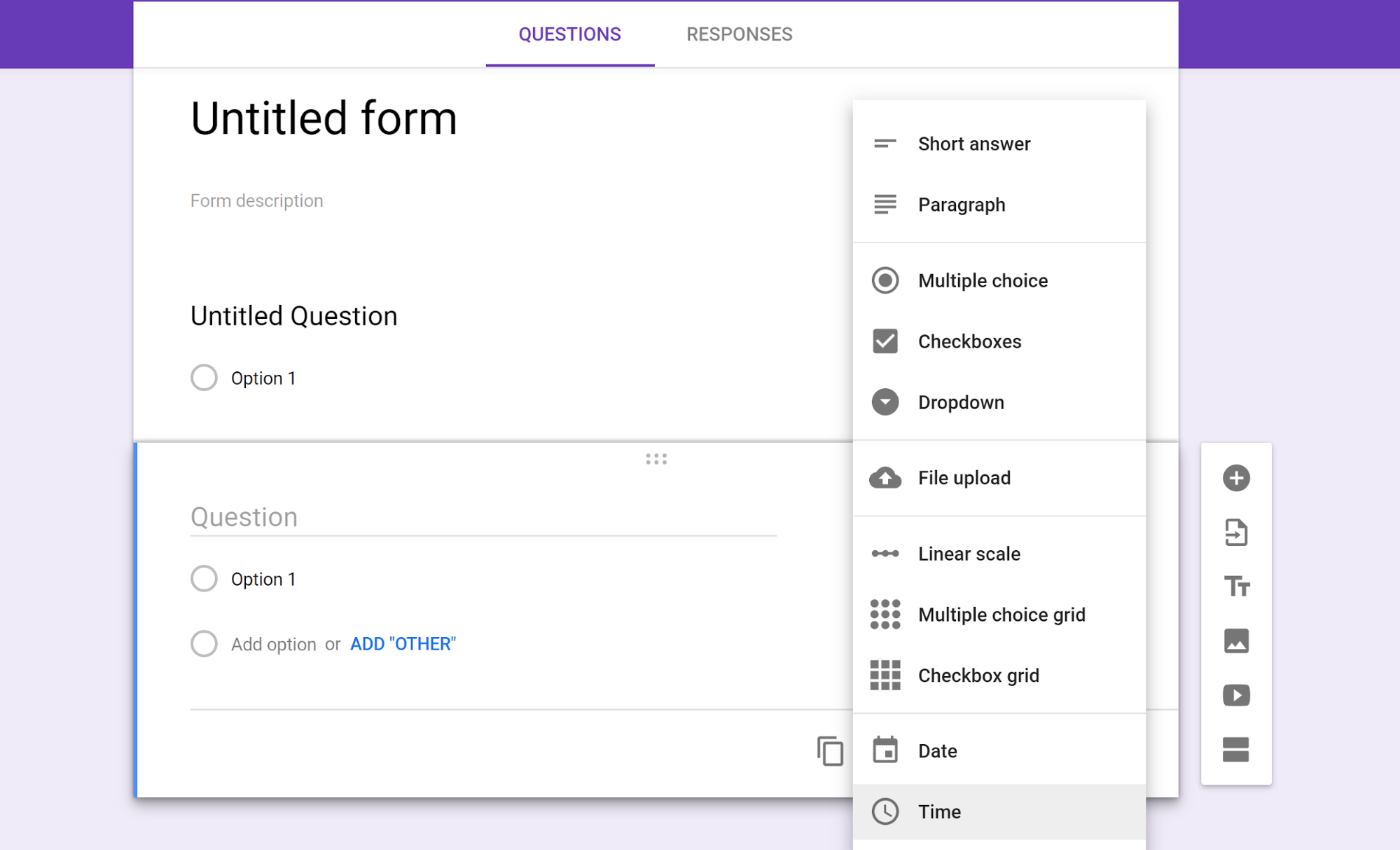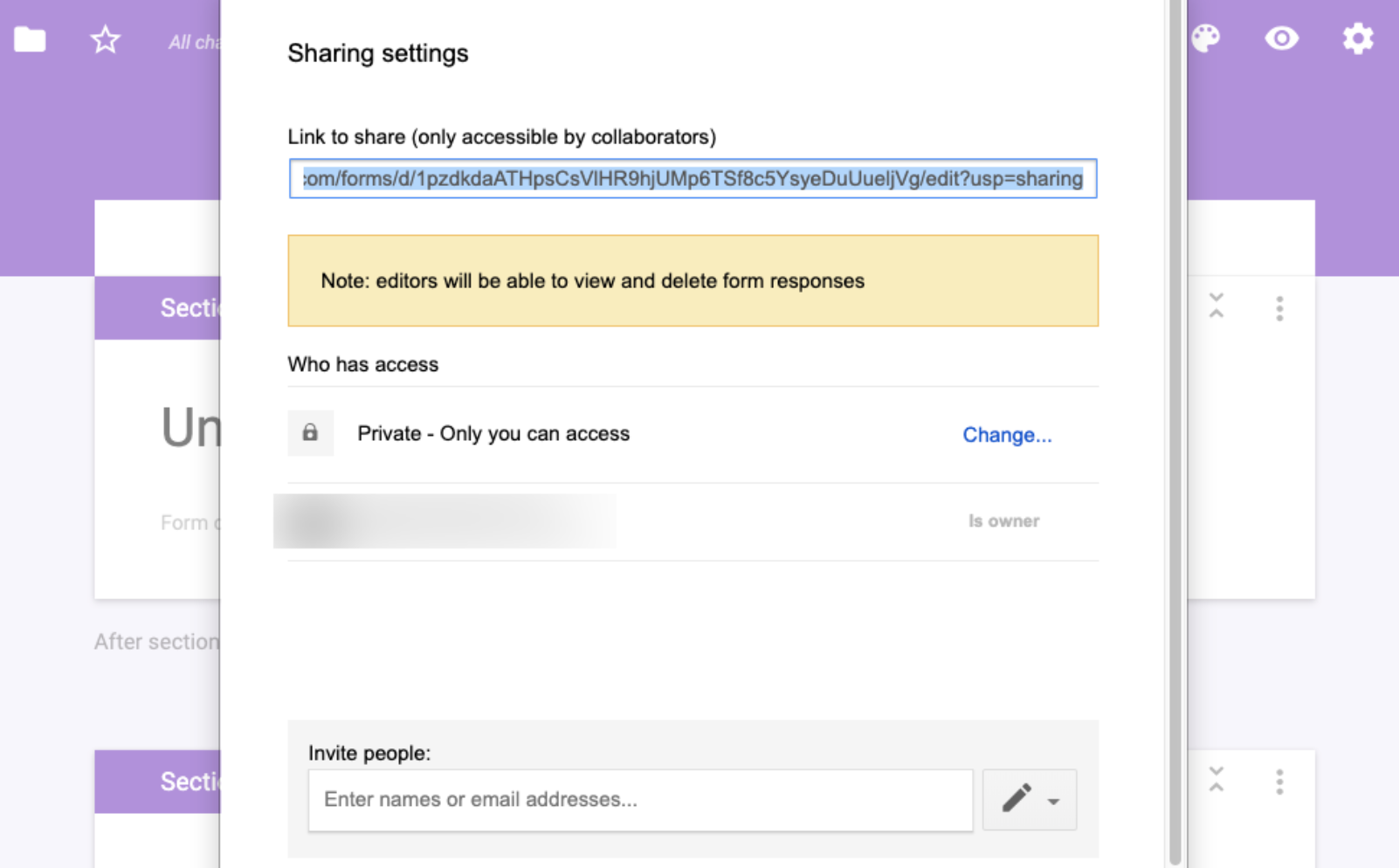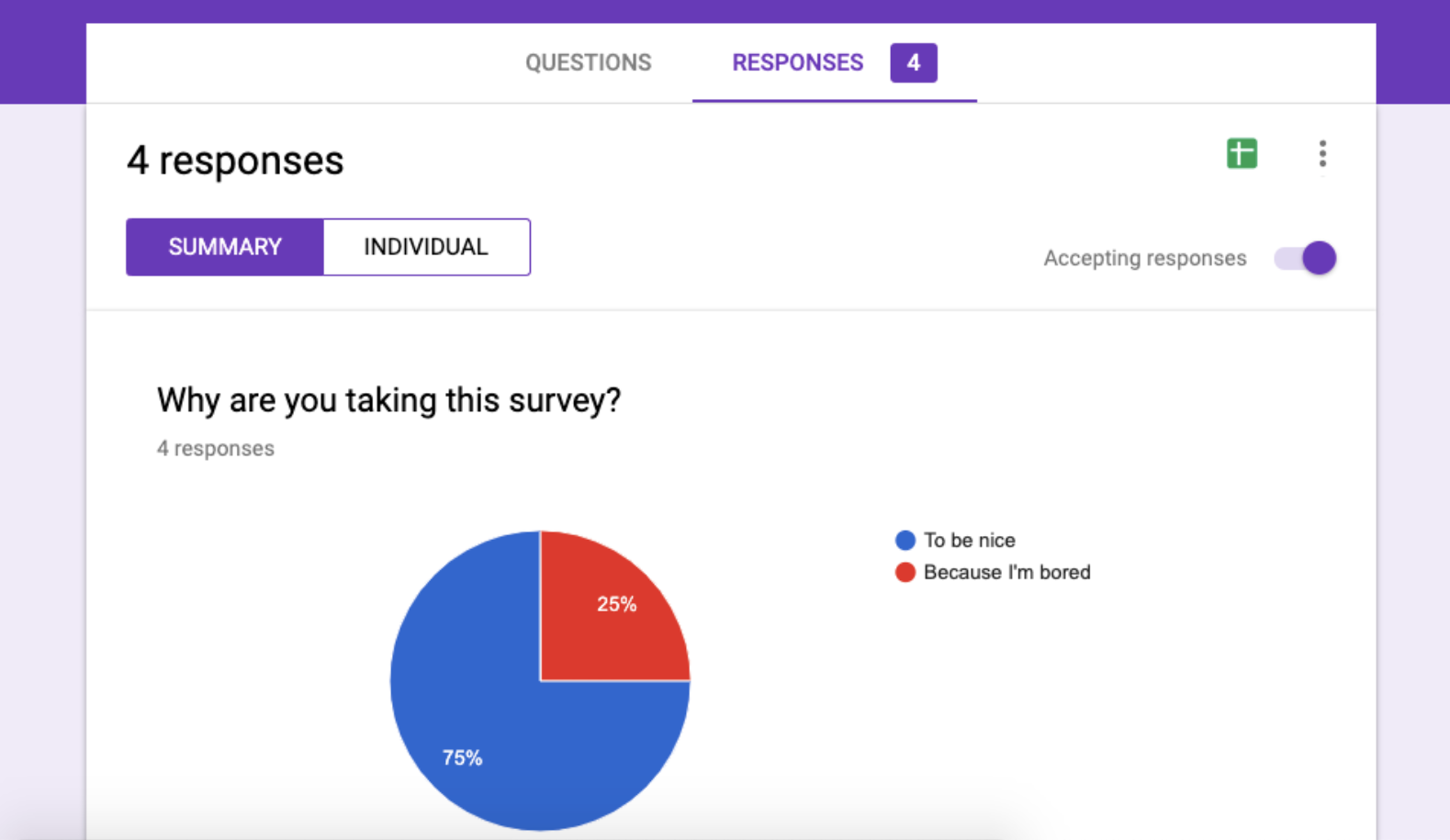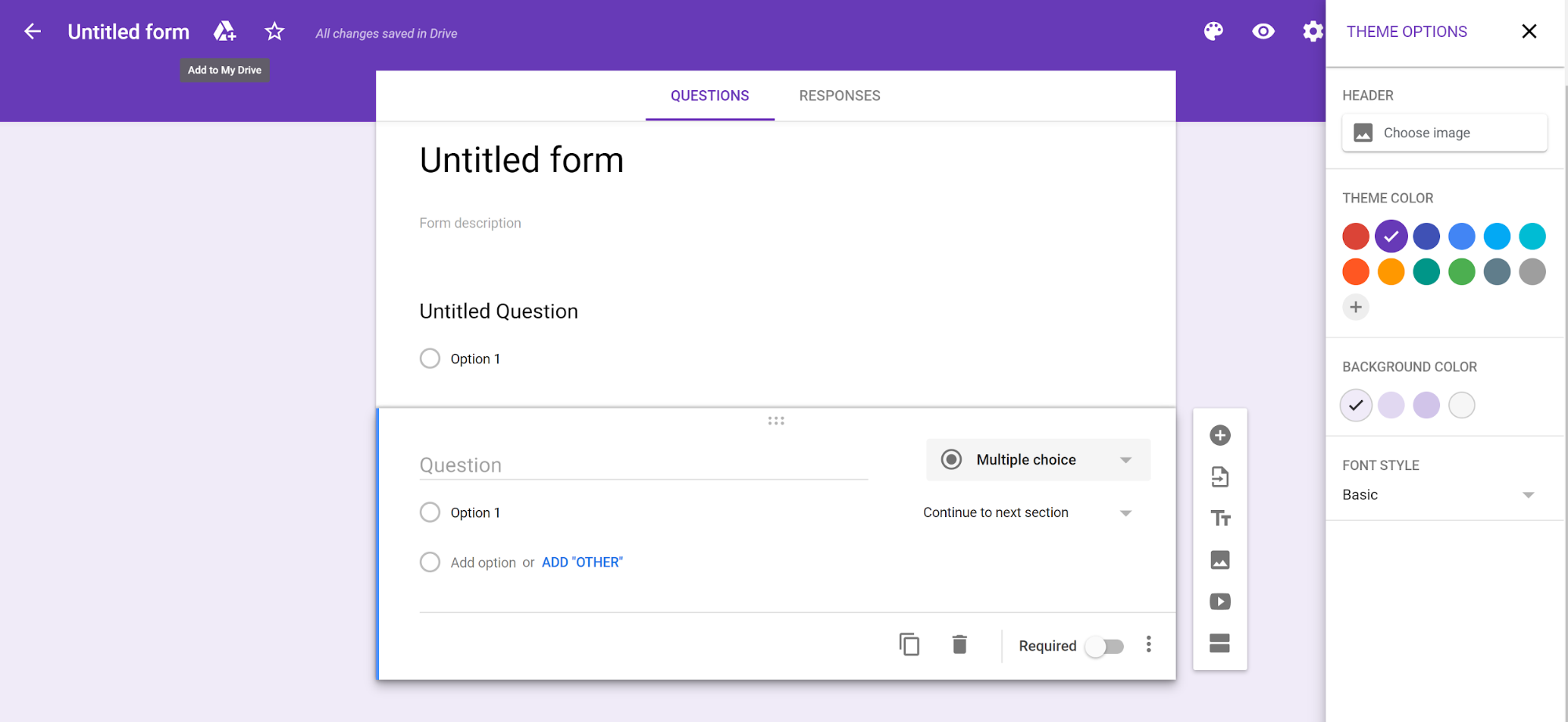How To Create A Checklist In Google Forms
Our Verdict
It's hard to resist Google Forms given that it offers survey logic, collaboration, and data analysis at no cost. However, the platform is oversimplified when it comes to question types and customization.
For
- Completely free for personal use
- Includes basic survey logic
- Integrated with the entire G Suite ecosystem
Against
- Collaboration features are surprisingly limited
- Only a handful of question types
- No support for free users
TechRadar Verdict
It's hard to resist Google Forms given that it offers survey logic, collaboration, and data analysis at no cost. However, the platform is oversimplified when it comes to question types and customization.
Pros
- + Completely free for personal use
- + Includes basic survey logic
- + Integrated with the entire G Suite ecosystem
Cons
- - Collaboration features are surprisingly limited
- - Only a handful of question types
- - No support for free users
Google Forms is a survey tool that's absolutely free for individuals and businesses with a Google account. There are no limitations on surveys, questions, or responses, which makes this one of the best free form builders on the market. Plus, the software includes excellent tools for collaboration.
However, Google Forms does have some major shortcomings. The types of questions are limited, the survey logic isn't all that robust, and there isn't much room for customizing your forms. To some extent, you get what you pay for with this free software.
Plans and pricing
Google Forms is completely free for individual Google users. All you need is a Google account, which is itself free as well.
Forms is also available for businesses as part of G Suite, which starts at $6 per user per month. There is no difference in the available Google Forms features based on the tier of your G Suite subscription.
Features
Google Forms is relatively basic in its feature set, so it's best suited to simple surveys and standard question types.
Question Types
The simplicity of Google Forms is immediately evident when you look at the types of questions available. There are multiple choice, drop-down, and short answer question types, and you can ask respondents to upload a file to your survey. But, you don't have the ability to accept payments through your form, or to create image- or video-based questions or hierarchical menus for drilling down into a subject. On top of that, you can only randomize questions if you randomize them for the entire survey.
However, one bright spot is that there are plenty of controls for validating form responses. You can even use regular expressions to designate what types of responses are acceptable. There's also immediate scoring, even for short-answer questions, if you want to use Google Forms to administer online quizzes.

Survey Logic
Google Forms is one of the only survey tools to offer conditional logic for free, so right from the start this is a standout feature. That said, the conditional logic controls are somewhat constrained. You can only apply logic to multiple choice and drop-down question types, and logic expressions only take into account responses to a single question at a time.
Collaboration
The collaboration tools within Google Forms are very strong, although a lot of the functionality of other Google apps is noticeably missing. For example, although you can easily share edit access with other Google users, there's no option in Forms to restrict specific users to view only. Moreover, you can't comment on surveys within Google Forms, and the designer doesn't track the entire history of changes to a form. These missing features mean that you'll want to be in fairly close contact with any team members with whom your survey is shared.

Data Analysis
Data analysis within Google Forms itself is very limited. The platform automatically charts your data, but you don't even get to select what type of graph is used for the display.
However, since Forms users automatically have access to Google Sheets, it's easy to explore survey responses in more detail. Sheets allows you to create pivot tables and custom data visualizations, as well as to export your survey data to Excel or your favorite statistical analysis software.

Interface and in use
Google Forms sports the same simple interface that you'd expect if you've ever used another Google app. The entire interface is centered around the question designer, which could hardly be more straightforward. There are just a handful of buttons to add and edit questions, and you can even copy questions from surveys you've made in the past to help save time. Since Google Forms is integrated with Google Drive, all changes to your survey are instantly and automatically saved to the cloud.
Unfortunately, customizing the look of your survey isn't nearly so easy. There are only around a dozen themes available for Google Forms, and customization options are limited to selecting a background color and switching between four selectable fonts. You also can't create a custom thank-you page—rather, you can only add a short thank-you message that appears when the survey is completed.

Support
Support for Google Forms is very limited for personal users, which isn't surprising given that this is a free service. Free users can check out the online documentation, which isn't all that extensive, but that's about it.
Paying G Suite subscribers get considerably more technical support. Google's help team is available by email or live chat 24/7, or by phone during normal business hours.
The competition
The main competitor to Google Forms is SurveyMonkey, which also offers a free form builder. However, the free version of SurveyMonkey puts tight restrictions on how many surveys you can create and how many responses you can capture. If you opt to pay for SurveyMonkey, there are more question types available, better collaboration options, advanced style customizations, and stronger data analysis functions than in Google Forms.
Final verdict
It's hard to go wrong with Google Forms considering that it's completely free for personal users, with no restrictions on the number of surveys you can create or responses you can accept. The platform maximizes simplicity, while integration with the broader G Suite ecosystem is a plus for collaboration and data analysis.
That said, there's little about Google Forms' features that help the platform stand above the competition. Other survey tools offer more advanced survey logic, customization, and question types. So, whether Google Forms is right for you depends on whether the platform has the necessary tools to meet your needs and whether or not you're willing to pay for a more complex survey software.

Michael Graw is a freelance journalist and photographer based in Bellingham, Washington. His interests span a wide range from business technology to finance to creative media, with a focus on new technology and emerging trends. Michael's work has been published in TechRadar, Tom's Guide, Business Insider, Fast Company, Salon, and Harvard Business Review.
How To Create A Checklist In Google Forms
Source: https://www.techradar.com/reviews/google-forms
Posted by: daviswallard1976.blogspot.com

0 Response to "How To Create A Checklist In Google Forms"
Post a Comment